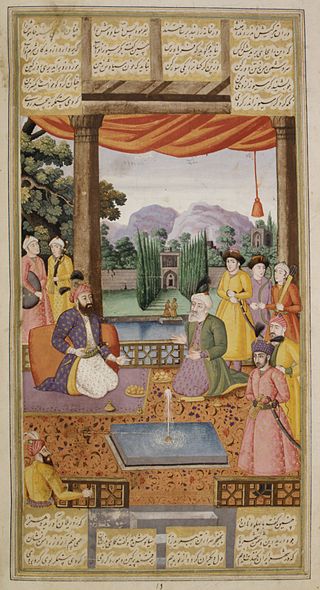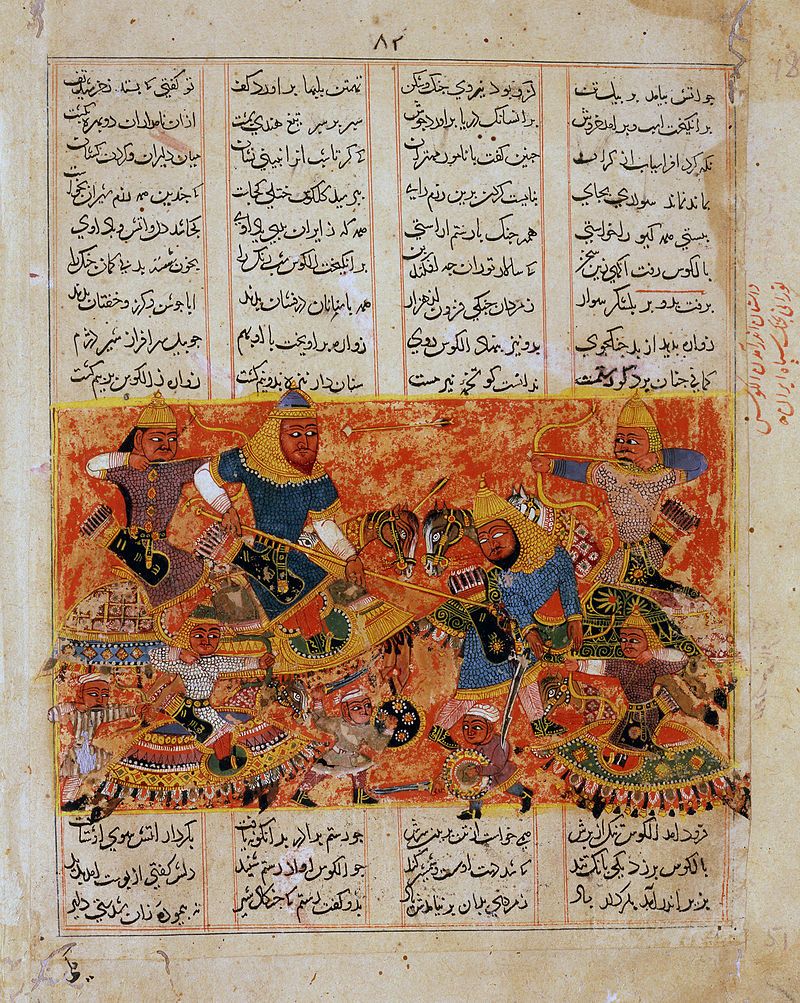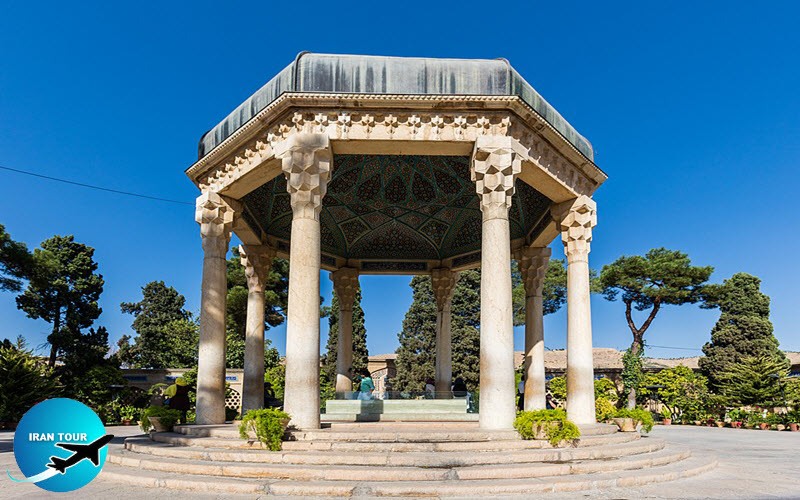Copyright 2020 - 2021 irantour.tours all right reserved
Designed by Behsazanhost
Persian (Iranian) Literature
Persian Literature
Persian literature has a number of noteworthy characteristics, the most striking of which is the exceptional prominence of poetry. Until quite recently, prose works were confined mostly to sciences, and poetry formed the chief outlet for artistic expression. Classical Persian literature was produced almost entirely under royal patronage, hence the frequency of panegyric verse. An influence of at least equal strength was religion, in particular Sufism, which inspired the remarkably high proportion of mystical poetry.
Persian Poetry
Classical Persian poetry is always rhymed. The principal verse forms are the qasida, Mathnavi, Ghazal and Rubai. The qasida, or ode, is a long poem in monorhyme, usually of a panegyric, didactic, or religious nature. The Mathnavi, written in rhyming couplets, is used for heroic, romantic, or narrative verse. The ghazal, or lyrics, is usually amorous or mystical and varies from four to sixteen couplets, all with the same rhyme scheme. The rubai is a quatrain with a peculiar meter. The greatest charm of Persian poetry lies in its language and its music. That is, it does not lend itself well to translate.
Ferdowsi and Shah Nameh
Ferdowsi is the author of Shah-Nameh, the epic history of the Iranian past, which has often been called the “Iliad of the East". Ferdowsi was born in Tus in Khorasan. He completed his great poem in 1010 and presented it to Sultan Mahmud Ghaznavid. Ferdowsi is reported to have secured the Sultan's acceptance of the poem
 |
| Shahnameh (Book of Kings) Firdausi (935–1020) |
through the good offices of Mahmud's minister, Ahmad ibn Hasan Meimandi. Unfortunately, Mahmud disgraced his minister soon afterward and, due to his connection with Meimandi, disgraced the poet as well. Having consulted his new favorites, Mahmud rewarded Ferdowsi with the ridiculous sum of money, which, bitterly disappointed, the poet divided between a bath attendant and a seller of beer. Ferdowsi left Mahmud's court first for Herat and then for Mazanderan. There the poet composed a satire on Mahmud, which he wanted to insert in the preface of Shah-Nameh. Unfortunately, Ferdowsi died just as Sultan Mahmud had determined to make amends for his poor treatment of the poet. The earliest date given for Ferdowsi's death is 1020 and the latest 1026. Therefore, it is certain that he lived to be more than 80 years old.
Shah-Nameh has nearly 60,000 couplets, and it took its author about 35 years to complete it. It is based mainly on a prose work that was compiled in the poet's early manhood in Tus. This prose was, in turn, the translation of a Pahlavi work, but it also contained additional material continuing the story to the overthrow of the Sasanians by the Arabs. The first poet to undertake the task of turning this chronicle into verse was Daqiqi, a poet at the court of the Samanids. However, he was murdered when he had only composed a thousand couplets of the epic. These verses were incorporated by Ferdowsi, with due acknowledgments, in his poem.
The story of Shah-Nameh starts with the reign of king Kiumars, founder of the mythical Kianid dynasty. Unfortunately, Kiumars offended the King of the Demons, who sent a huge army of giants and monsters to Persia. The demons destroyed the force of Kiumars and killed his son Siamak. Persia was, however, freed through the efforts of Hushang, Kiumars's grandson, who killed the King of the Demons with his bare hands. Since then, Persia has been safe from her foes, and her civilization reached its climax during the seven centuries-long reign of Jamshid, whom Arab writers often confused with Solomon the Prophet because of his extraordinary wisdom and power. Jamshid's reign was the golden age for Persia, for no one became ill, old, or died. However, this period of prosperity ended when Jamshid, inflated with pride, angered the gods by aspiring to divine honors. The kingdom was at once invaded by Zahak, and the Persians, seeing that Fortune had turned her face from their sovereign, gave their allegiance to the usurper. However, the Persians soon discovered the consequences of their surrender, for their new king had two huge serpents growing from his shoulders, and these horrible creatures could only be appeased by feeding them young men's brains. The country was shrouded in misery for several centuries until it was set free by Fereidun, supported by the people, who began a revolt under the leadership of the blacksmith Kaveh, whose leather apron became their symbol of liberty. Zahak received a just reward for his crimes when he was imprisoned in a cavern on the side of Mount Damavand, where, as the legend says, his groans can be heard even to the present day. With the death of Fereidun, the focus of Shah-Nameh's story shifts from the kings to the hero Rostam, who, with the aid of his celebrated steed Rakhsh, protected the throne of Persia for generations and constantly came to the rescue of its often incompetent kings. It is told that at the age of eight, Rostam was as strong as the most powerful warrior in the kingdom.
 |
| Rustam kills the Turanian hero Alkus with his lance |
He was still very young when Afrasiyab, King of Tartary (Turan), invaded Persia with a vast army, and naturally, Rostam was singled out to be one of the generals on the Persian side. In the great battle which ensued between the hosts of Iran and Tartary, Rostam smashed the Tartary army that fled in confusion across the Persian border. After this, Iran had peace for many years. War started again only when King Key-Kavus invaded Mazanderan which was the chosen haunt of demons. Rostam and his father Zal were left in charge of the kingdom, while the monarch led his soldiers into a hostile country. The soldiers, however, were killed by huge hailstones, and the king, together with a few survivors, was taken captive and deprived of sight. When the news of this terrible disaster reached Persia, Rostam, without a moment's hesitation, rode off alone to free his sovereign. The seven adventures that befell him on this quest are perhaps the most famous in Persian legend, reminding the reader of Hercules's labors. Rostam finally freed KeyKavus and recovered the captives' sight by washing their eyes with blood of the great White Demon whom he had killed as his final heroic deed. Again, Iran was at peace for a time, and its hero spent his days hunting. On one of these expeditions, he came to a little kingdom on the border of Khorasan. There he met, fell in love with, and married, princess Tahmineh. Rostam, however, was not the kind of man to belong at ease, and after some months he left his wife. However, before they parted, he gave her a talisman, telling her to bind it around the arm of her child if the gods granted them a son. In due course, a splendid boy was born to Tahmineh, who, fearing that her child might be taken from her if her husband learned the truth, concealed the child's birth from his father. Sohrab grew up full of pride in being the son of a great hero. When he was still very young, he sallied out into the world, mounted on a steed of the race of Rakhsh, announcing that he intended to conquer Persia and place Rostam on the throne. Afrasiyab heard of the young hero, and wishing to gain such an ally for his side, persuaded him to join his army. Of course, the sovereign had no intention of handing Iran over to Rostam. Therefore, he warned his generals not to let Sohrab know which of the Persian warriors was his father, hoping that the two heroes might engage in mortal combat and kill one another, thus leaving him free to seize Persia. When the news of the threat to Persia reached Rostam, he set out to help his sovereign, although he had been badly treated by the unjust king all these years. It is said that when Rostam heard the accounts of the prowess of the young Tartary champion, he wondered whether Tahmineh could have deceived him. Sohrab, on his side, was anxious to find Rostam's tent and commanded a captured Persian soldier to point it out. The soldier, however, feared that the Tartary hero would slay Rostam by treachery and evaded the question. As a result of this misunderstanding, the two heroes came to the fore, and Rostam mortally wounded his own son in a fierce battle and only then noticed the talisman on Sohrab's arm. In remorse, he wanted to kill himself but Sohrab implored him to live and to continue to defend Persia. The crime of murdering his son, however, resulted in a change of Rostam's fortunes. He himself died as a result of treachery, killed by his own brother. With the death of Rostam, the mythical Kianid dynasty neared its end. The remainder of Shah-Nameh deals with some historical facts much embroidered with fiction and is not as exciting as its mythological and heroic parts. To the Iranians, Shah-Nameh is their country's glorious past, preserved for all time in sonorous and majestic verse. The stories of Shahnameh are inseparable from Iranian life and are a constant source of inspiration for Iranian art. Read more about Shahname
Omar Khayyam
Omar Khayyam is perhaps the best-known and most appreciated Persian poet in the West. He was born in 1048 in Nishapur in Khorasan. Philosophy, jurisprudence, history, mathematics, medicine, and astronomy were among the subjects mastered by this brilliant man. He was responsible for devising the Jalali calendar and for building an observatory in Esfahan during the reign of Malek Shah Seljuk. Until the end of the 19th century, Khayyam's poetry was largely neglected in Iran mainly because the orthodox censured him for his unorthodoxy. However, when Fitzgerald's translation made him suddenly popular in the west, the Iranians began to reassess Khayyam's merits as the greatest poet of rubai. Unfortunately, few of Khayyam's prose writings have survived; these include a few brief notes on metaphysics and a treatise on Euclid.
 |
| Mausoleum of Hafez |
Nezami
Nezami was born at Ganja in the Caucasus in 1140. He was a prolific writer who was famous especially for his Khamseh ("Quintet"). It consists of the Makhzan al-Asrar (“Treasure House of Secrets”), a mystical epic inspired by the 12th-century Persian poet Sanai; the popular romances Khosrow and Shirin and Leili and Majnun; the epic Iskandar-Nameh (“The Story of Alexander the Great"); and Haft Peikar (“Seven Beauties"), the life story of the Sasanid king Bahram Gur. Nezami's works enjoyed great popularity, and many of their episodes became popular themes of Persian miniatures.
Rumi
The greatest Sufi mystic and poet in Persian literature, Mowlana (Jalal al-Din Mohammad) Rumi is famous for his passionate lyrics and for his didactic epic Mathnavi-ye Manavi ("Spiritual Couplets"), which widely influenced Muslim mystical thought and literature. After Rumi's death, his disciples were organized as the Mowlaviyeh order, known in the West as the Whirling Dervishes.
Saadi
Saadi, whose real name was Mosharraf al-Din, was born in Shiraz about 1184. During his long, remarkable life, he managed to travel to the most distant cities of the Islamic world, and these travels and experiences are reflected in many of his poems. Toward the end of his life, Saadi built himself a hermitage outside the walls of Shiraz on the spot where his tomb now stands. Golestan (“The Rose Garden")in prose and Bustan (“The Orchard”) in verse are Saadi's main masterpieces, but he is also justly celebrated for his ghazals, in which he is rivaled only by his great fellow-townsman Hafez. Saadi died at a very old age in 1291.
Hafez
The most favorite Iranian poet, Shams al-Din Mohammad, entitled Hafez (“Hafez” designates one who has learned the Koran
by heart), was born in Shiraz in 1325. Unlike Saadi, Hafez left his native city only on several short trips, though sovereigns from many parts of Persia and India offered him great rewards if he would reside at their courts. Hafez is particularly famed for his ghazals, the form that he brought to a level of perfection not achieved before or since. When they practice divination, the Iranians often open Hafez's works at random with an invocation.
- Details
- Category: IRAN Blog